Building an AR-15 might seem like a daunting task at first but in reality it’s a simple process – as long as you follow the steps and use the right tools. Tools are a definite issue; channel locks and a finishing nail are not what you need for the job (yes, I’m looking at you). Of course, part of the process is selecting good parts. There are myriad parts on the market. Take lower receivers, for example: how do you choose the best AR-15 receiver from the hundreds of options?
The lower receiver is the heart of your AR-15 build. Every other component revolves around it which is why it’s wise to choose one that’s well-made. It’s also the serialized piece of your build making it the one part that must ship to an FFL.
You’ll find a lot of AR fans say the lower is the least important part. Nothing but a paperweight, they say, so go ahead and buy whatever you want. In some ways they are correct; however, the lower is an integral part and if it isn’t machined properly your gun itself is one big paperweight. There are also different metals and styles to consider so rather than just randomly grabbing a lower off the proverbial shelf, take a moment and consider the following details.
Aluminum Alloys
There are two basic aluminum allows used for lower receivers: 6061-T6 and 7075-T6. 6061-T6 is more affordably priced and has traits such as a tensile strength of 45,000 psi, a shear strength of 31,000 psi, and a Brinell Hardness of 95. In contrast, 7075-T6’s tensile strength is 83,000 psi, shear strength is 31,000 psi, and it has a Brinell Hardness of 150. (Side note: Brinell Hardness is a method used to test in which an indenter is pressed into the material for a set time then removed. The indentation is measured microscopically. It’s the oldest hardness method still being utilized.)
Bottom line is 7075-T6 is almost twice as strong as 6061-T6 although the latter is technically more resistant to corrosion, a feature that is unlikely to count for much unless you intend to use a bare aluminum lower.
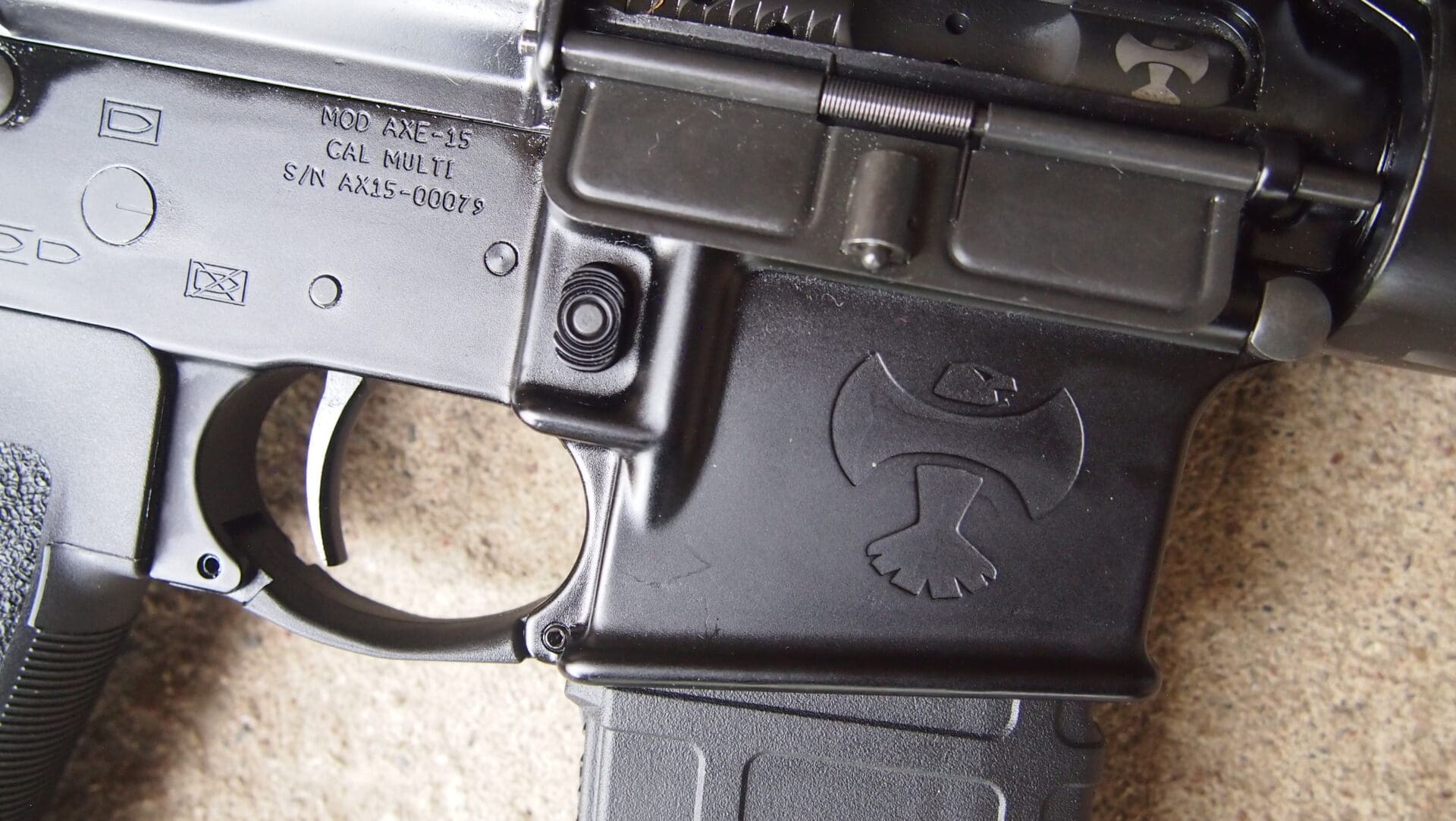
Methodology
Just as there are two basic types of aluminum alloys used there are three basic manufacturing methods. First is cast, the simplest method. Cast parts are made by pouring the aluminum of choice into a mold and allowing it to cool. Once it has cooled it’s machined into its final form. Here’s the thing about cast lowers: because the aluminum is poured into a mold in molten form and simply allowed to cool it is the weakest method of the three. That’s not to say cast lowers cannot be used; they can. Just keep in mind they aren’t as durable.
Billet is next on the list. Billet lowers start their life a solid block of bar stock extruded aluminum; the block is formed by being rolled by machine. From there it’s machined into the desired shape. You’ll find billet lowers tend to be the most highly-customized because the machining possibilities from bar stock are practically endless. On the toughness scale of the three methods billet falls in the middle.
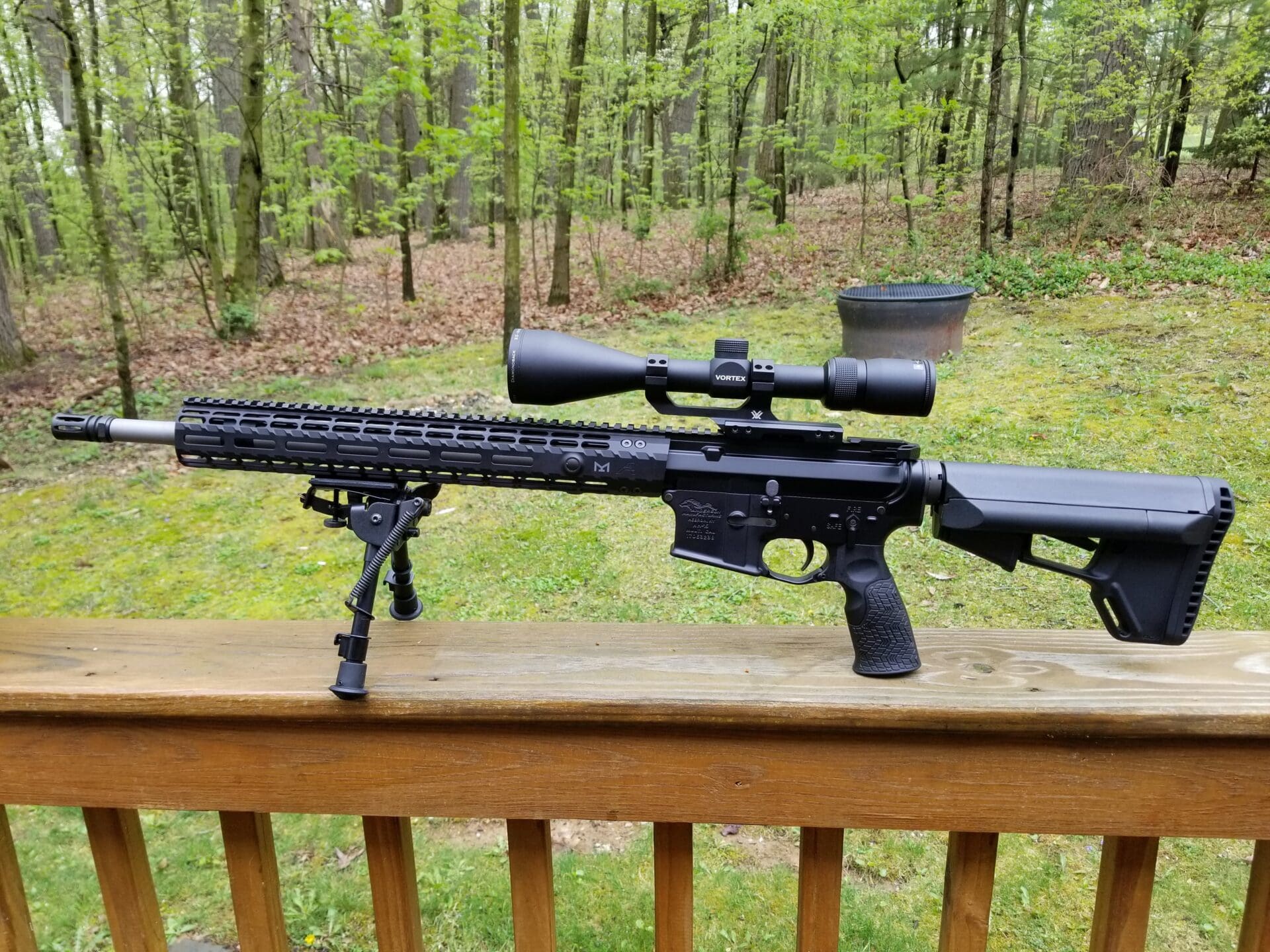
The strongest method used is forging. A forged lower is hammered by machine into a forging die. Compressive force is used for superior strength; when that is done the raw form is finished by CNC. The metallurgy of a forged lower is stronger than cast or billet due in part to its continuous grain structure.
We’re not going to get into polymer.
Miscellaneous Tips
No, all lowers are not made equal. Use the above information to select the quality necessary for your task; is your AR-15 going to be for home defense, hunting, or long-range shooting? Do you want a flashy showpiece or a basic workhorse? Some lowers are not machined as precisely as others which results in poor fitment with the upper or, in severe cases, trigger assemblies failing to fit properly (or various vital holes being improperly aligned). Although it is not necessary to use the most expensive AR-15 lower receiver on the market you should take care to choose a quality, durable part. You want a reliable AR-15, right? Then select parts with care rather than haphazardly.
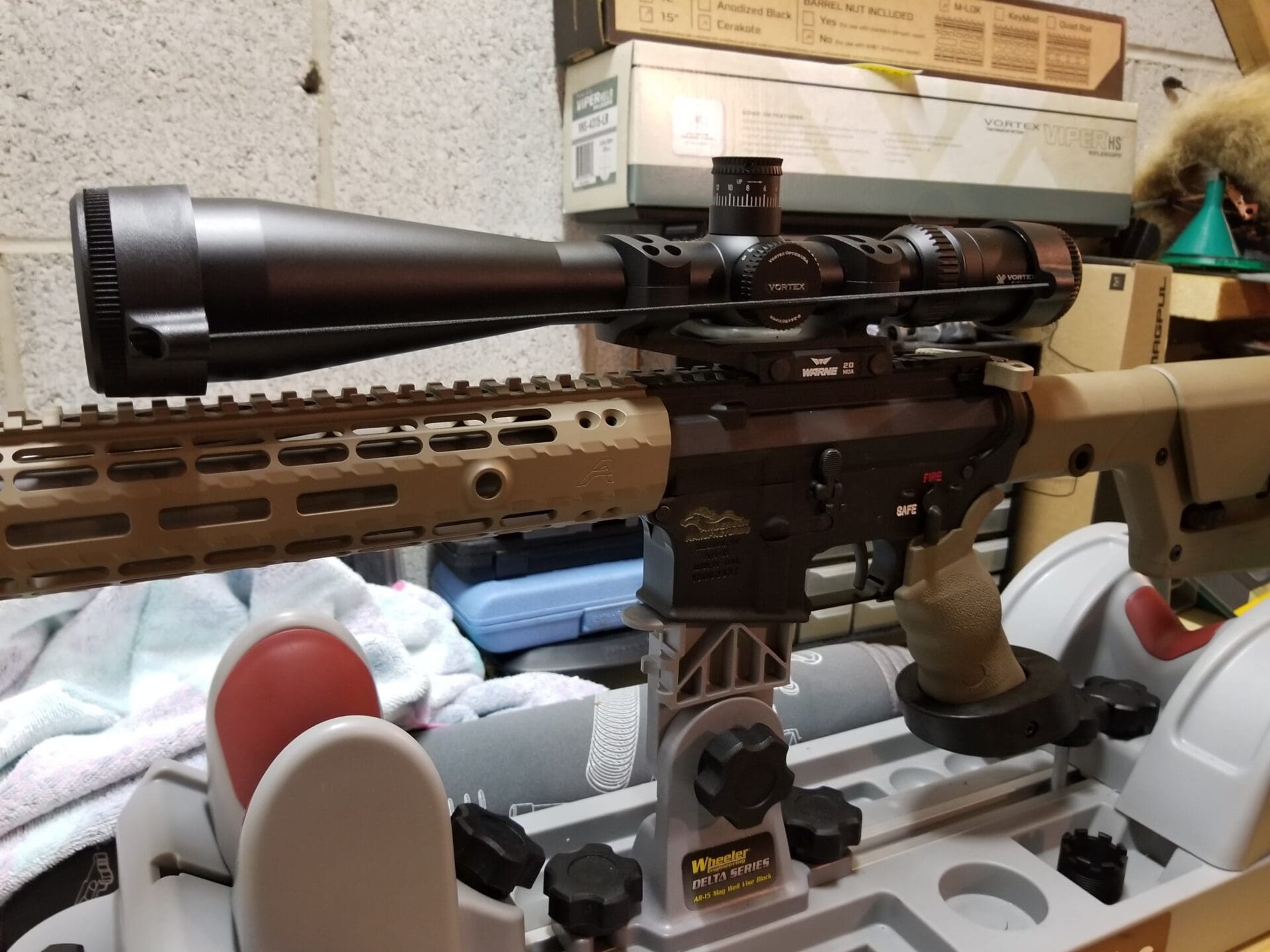
1. Anderson Manufacturing
Years ago, at one of my first SHOT Shows, I stood in the Anderson booth and listened to the whole spiel of the sales rep. To hear him tell it the company’s parts never need lubrication of any kind and have space-age durability. Reality is a bit different.
Anderson gets a bum rap from the snobby side of social media. There is some basis to claims of poor machining – sometimes a lower does hit the shelves that isn’t precisely machined – and it is accurate that they’re not quite as tough as some brands. But they do perform well within realistic expectations for the price point and are, in fact, more than satisfactory for thousands of gun owners. For new builders they’re even better because they don’t burn a hole in your wallet and they get the job done.
AM-15 Stripped Lower
Features: MIL-SPEC, multi-cal engraved, semi-auto, CNC-machined
Material: 7075-T6 forged aluminum
Finish: Type 3 Hard Anodized, Black
Treatment: Non-RF85
MSRP: $48.10, check it out here.
Budget restrictions often influence our choices on gun parts purchases but we do our best with what we have. I’ve used Anderson parts without any issues as have countless other AR builders. If you run into an issue simply contact their customer service and get it handled (or do some minor machining on your own). Odds are you won’t have any problems whatsoever. The Anderson lower is a good budget-friendly, entry-level option.
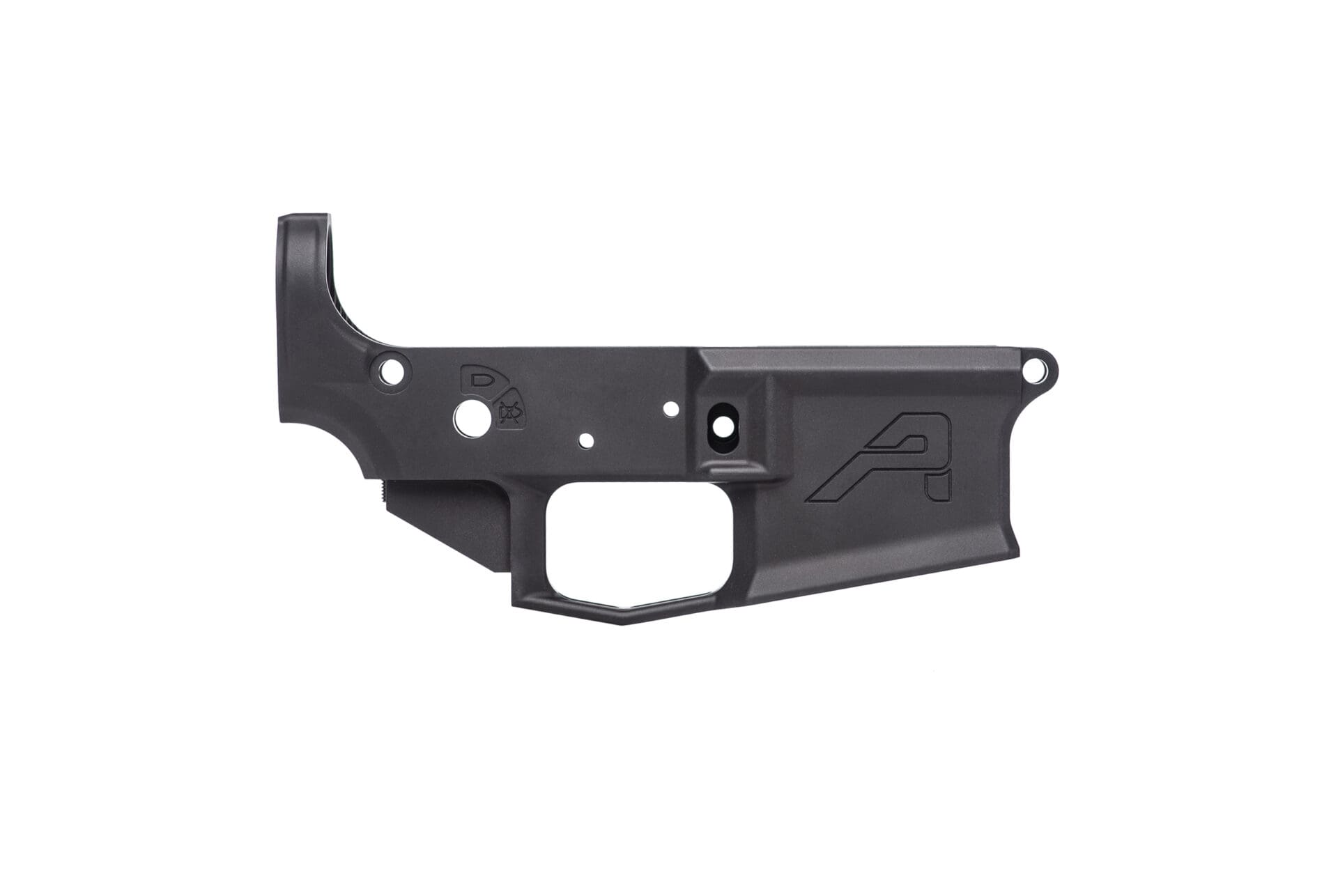
2. Aero Precision
Aero is a fantastic choice for builders of all experience levels. Their quality control is solid, parts are machined to precise specifications, and their customer service is great. In fact, I just finished a build using multiple Aero parts a couple weeks ago. There are more than a few Aero parts in my house, and it’s because I like them, not because they like me (I have no idea how they feel about me). These parts are well-made and well worth consideration.
The Gen 2 version of the Aero stripped lower has a couple features that make me favor it over others. The magwell is slightly flared an although that does lend it a cool aesthetic it’s really nice because it makes mag changes smoother. If you’ve ever fought with a lower during mag change drills you understand the thrill of smooth changes. It isn’t a luxury, it’s a necessity.
Another stellar feature of the Gen 2 Aero stripped lower is the upper tension screw. The lower ships with a nylon-tipped tensioning set screw in the grip tang that can be adjusted as needed for a snug fit against the upper receiver. Improvements in fitment are always a win.
Aero Precision AR-15 Stripped Lower Receiver, Gen 2
Features: Upper tension screw, flared magwell, multi-cal engraved
Material: 7075-T6 forged aluminum
Finish: Anodized Black
Weight: 8.35 ounces
MSRP: $63.00, check it out here
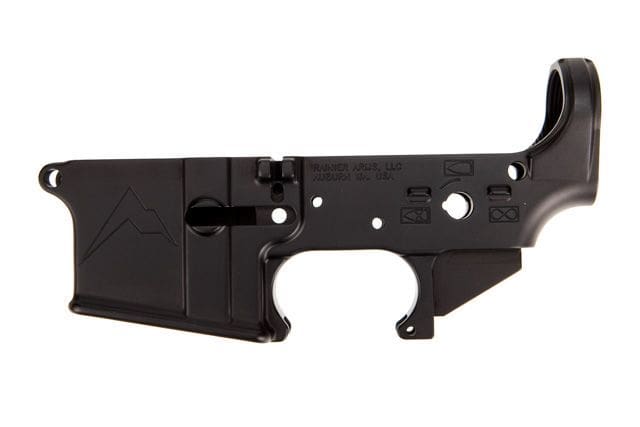
3) Rainier Arms AR-15 Forged Lower
Rainier Arms might not be quite as well-known as other companies but they do have a good reputation (and brand recognition is increasing, too). The company is based out of Washington State and manufactures a line of complete firearms as well as components so if you’d rather buy an already-made gun, go for it.
Their AR-15 Forged Lower is made using 7075-T6 aluminum and has a deep black finish. Features include a flared magwell and an upper-to-lower tensioning screw. This particular model holds appeal for me because it allows me to easily install the trigger guard I have on hand. And, of course, it’s also a quality, in-spec lower from a reputable manufacturer.
For those who favor Rainier Arms or are considering trying them out, keep in mind i1639 just passed in Washington State. Now might be the time to stock up (just saying). You can never have too many lowers on hand.
Rainier Arms AR-15 Forged Lower Receiver
Features: Flared magwell and upper-to-lower tensioning screw
Material: 7075-T6 aluminum
Finish: Black anodized
MSRP: $103.99, check it out here
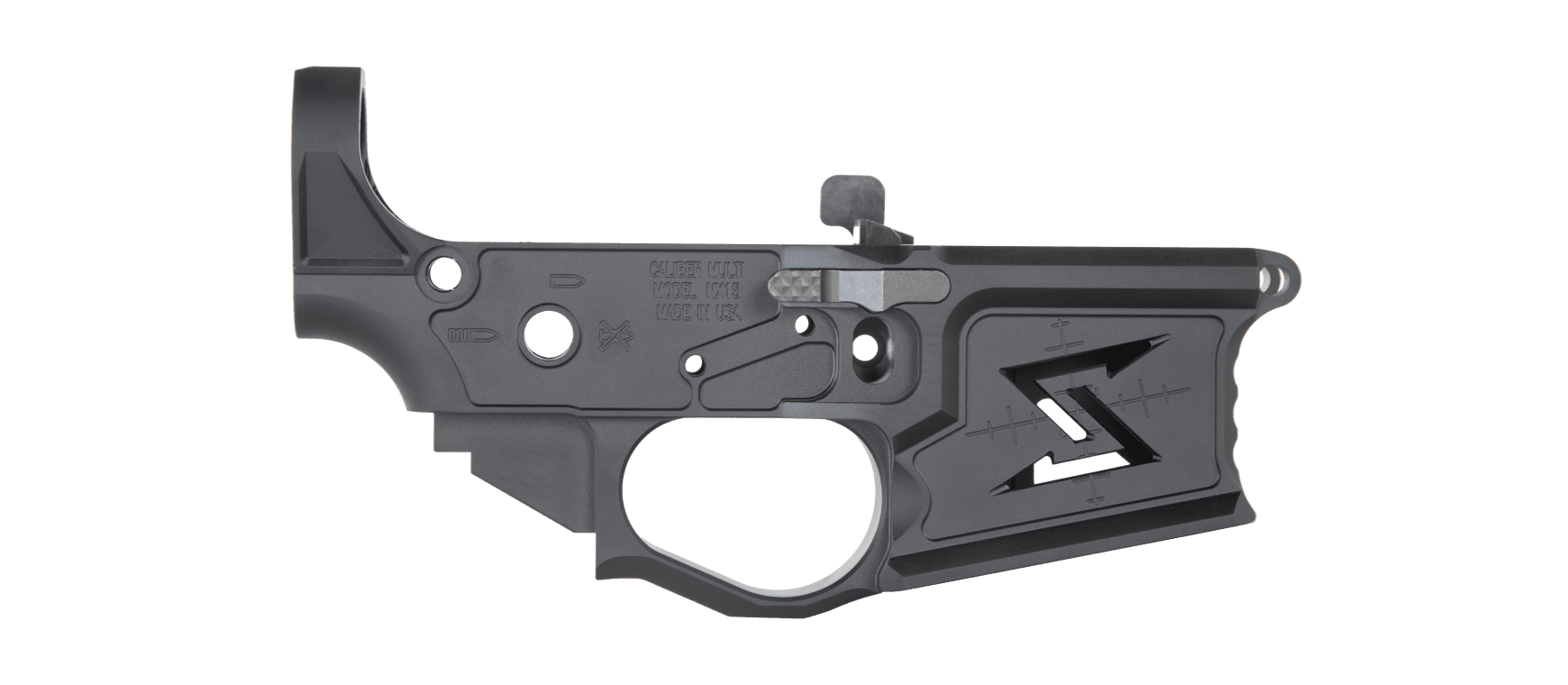
4) Seekins Precision NX15 Skeletonized Lower
Lightweight builds have a number of benefits including the fact that they’re easier to carry on hunts. Don’t believe me? Try carrying 12 pounds of rifle through the mountains. It isn’t pleasant.
The Seekins Precision NX15 Skeletonized Lower is designed to cut weight from your build while also performing well – and it does. This is a billet receiver machined from 7075-T6 aluminum marketed as MIL-SPEC compatible made to strict tolerances. Features include an ambidextrous bolt release and an enlarged trigger guard. The lower is also Type III, Class 2 hardcoat anodized finished meaning it has a denser, more durable finish.
Seekins has a fantastic reputation for quality control and overall performance.They have quite a few fans in the AR building community, understandably so.
Seekins Precision NX15 Skeletonized Lower Receiver
Features: Skeletonized with ambidextrous bolt release and enlarged trigger guard
Material: 7075-T6 aluminum
Finish: Type III, Class 2 hardcoat anodized
Weight: 9.45 ounces
MSRP: $259.00, check it out here
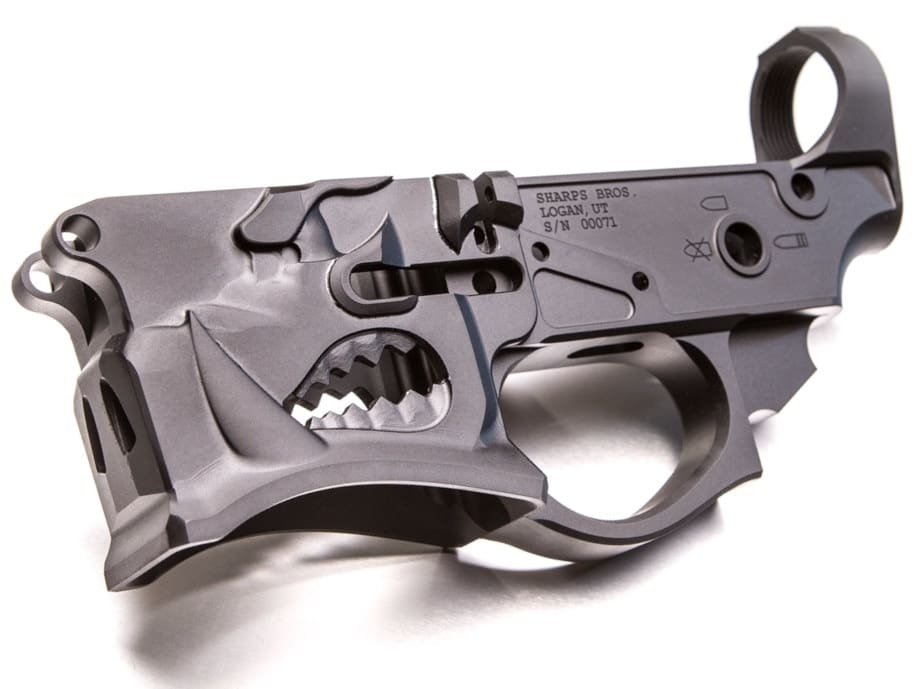
5) Sharps Bros Warthog AR15 Lower
It’s impossible to put together this type of list without mentioning Sharps Bros. Whether or not you’re a builder you’re probably at least passingly familiar with the unique receivers designed by Sharps Bros – think aircraft-inspired lowers and Spartan-themed magwells. (Yes, they’re well-made, too.)
The Warthog AR15 Lower is one of their many creations and was designed in the spirit of the A-10 Warthog complete with snarling and tusks. The current iteration is the Gen 2 and weighs a bit less than the original. The Gen 2 also has a threaded bolt catch pin.
This lower is made from 7075-T6 aluminum and hardcoat anodized. The magwell is flared for faster magazine changes and has cutouts that help in reducing overall weight. Sharps Bros markets this lower as being MIL-SPEC compatible. They are known for putting out solid components machined to precise specifications so if you’re considering a lower with personality, check it out.
Sharps Bros Warthog AR15 Lower
Features: Flared magwell, threaded bolt catch pin, MIL-SPEC compatible
Material: 7075-T6 aluminum
Finish: Hardcoat anodized, black
Weight: 9.8 ounces
MSRP: $319.95, check it out here


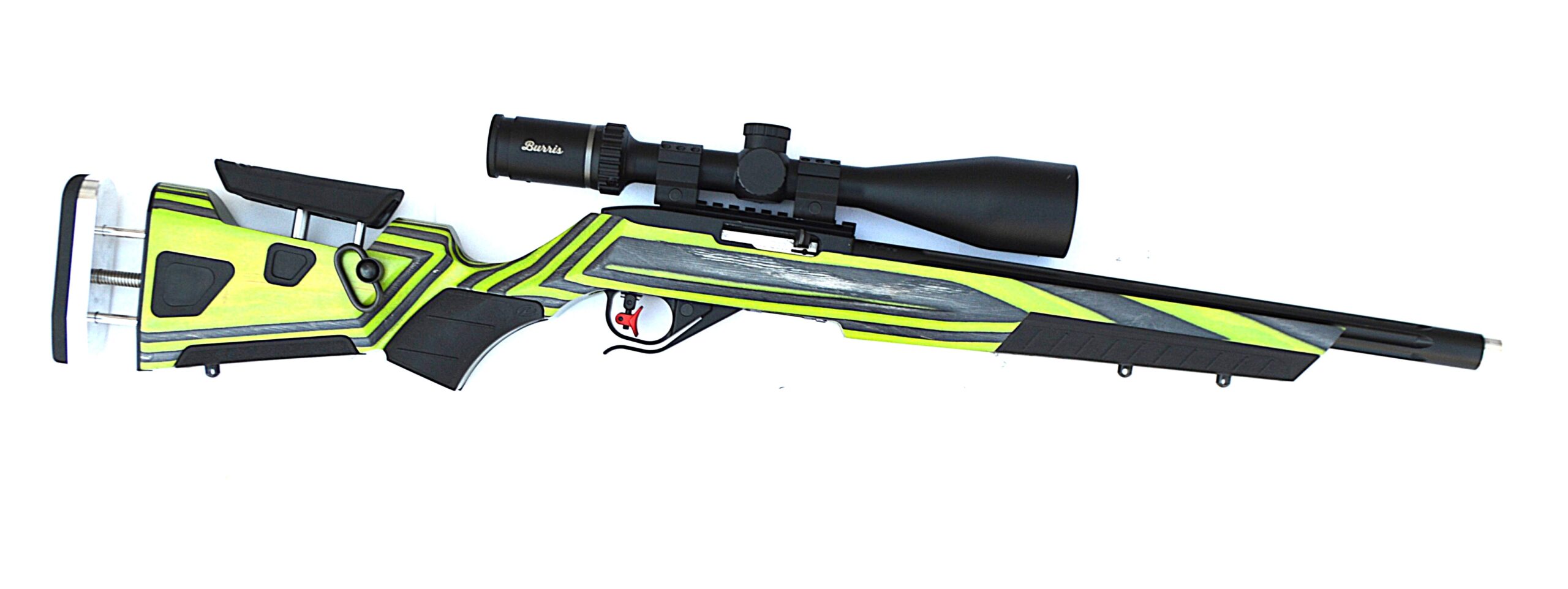






I like my Crusader lowers.
I love my Lancer L15 lower! In fact, I registered it as an SBR a few years ago as I decided it would be “the one.” Review: https://www.thetruthaboutguns.com/2015/03/jeremy-s/lancer-systems-l15-lower-receiver/
Heh. My L15s are also my favorites. Love the well adapters.
That said, I have used used (and continue to use) everything from $30 Anderson’s, to PSA LW and APs, Aeros (G1 and G2), and and a few Seekins SP223s (yes, I probably need a support group) and have yet to run in a QC issue with any of them. I’m sure if I keep building I’ll find one sooner of later 🙂
oooh, stripped lowers!
I’ve built 3 ARs – a 20″ old school fixed stock rifle, a 16″ carbine, and an 11″ barrel pistol – on Anderson lowers. They are one of the best low priced deals going. Everything fit with no problems and all three guns shoot extremely well. I used Delton upper kits that I found on sale for the long barrel rifle and carbine and they also seem to be pretty good for the price. Nothing fancy but reliable and accurate enough for this old guy. The pistol was built with a Palmetto upper kit which also seems to be okay. With my collection I should be able to keep the zombies off the front lawn as long as the ammo and Jack Daniels holds out.
AP is where it is at. I use them for all my builds.
Aero lowers are excellent.
Aero also once made lowers for PSA (if you find a PSA lower with a SN starting with “AP”, you have an Aero lower).
Bottom line, any lower should work with a stock lower parts kit, and should work with a forged upper.
If it doesn’t, take it back because something’s out of spec.
Anything else is aesthetics and personal choice. Nothing wrong with paying for those, of course, but be aware that the price tends to increase nonlinearly as you get farther from the basic forged lower.
Personally, for the last build or two, I’ve been very happy with Aero Precision M4 lowers. You pay a modest premium for some very useful additions, none of which (in my experience) are likely to cause you headaches down the road if your build is otherwise good.
I’ve done a couple builds with San Tan Tactical lowers–full ambi and well-made. Lefty controls are well thought out and integral to the lowers.
Love my santan set, worth the money. Has yours ever been picky about locking open on certain mags? I have exactly one G2 pmag that it won’t lock for but my other rifles will.
Only mag issues I’ve had were with a PWS Diablo 7.62×39 pistol build, and it was just one mag that was fussy (feed issues). 7.62 AR mags have a reputation for being sketchy, so I’m not blaming the lower for that.
Anderson lower, PSA 10.5″ upper, 4″ groups at 100yds with MBUIS. Good to go.
I-1639 does not include lower receivers. I’m sure someone will notice this oversight and try to amend it. The new law will cause all semi-auto rifles and shotguns to be categorized as “assault weapons’ and have a 10 day waiting period and certification requirements. A concealed pistol license means nothing regarding the waiting period. Oddly enough, AR and AK pistols missed being swept up in this stupidity and having a CPL means you walk out of the shop with it unless you get a NICS hold. For the first time, I have become interested in AR pistols. LMT lowers are pretty nice.
Shotguns are not included in 1639; only “semi-automatic assault rifles” which are defined in the initiative as being a particular type of rifle, which, again is defined prior to that as having a rifled bore and firing fixed metallic cartridges. Shotguns are defined separately and not included in the semi-automatic assault rifle definition that drives all the dumbness.
But you are correct about it not seeming to apply to lowers, or AR/AK pistols (beyond how it applies to all pistols). Seems like the bets work arounds are to build your own AR/AKs, and for any other semi-auto rifles, go to OR or ID, since you can buy long guns out of state.
I read, somewhere, that something else changed, separate from 1639, but that will also go into effect July 1, that removes the waiting period exemption with CPL. I haven’t been able to verify that yet, though, so take that one with a grain of salt.
Buying long guns out of state will be a thing of the past after July 1. Just like a pistol, they will have to be transferred to a WA FFL.
Stripped lowers are still safe though. They get registered as “other” and then you can turn them into whatever you please. Beautiful thing.
Complete lowers are also safe/exempt. My FFL confirmed this with me. He’s a smart dude.
Wait a sec; what change of law is going to make buying long guns out of state illegal? Nothing I saw in 1639 makes any change to that.
Yeah, that’s a surprise to me, too. I didn’t see anything like that in the text.
For some reason, I got semi-auto shotguns with slug barrels mixed in. I can’t find mention of that anywhere. Thanks for pointing out that inaccuracy.
Since the writer did not get into polymer, I will. The toughest one I have found is from James Madison tactile. A machinist told me that it was the toughest he has seen. The fit to the upper was perfect. There is another brand on the market and upon receiving it noticed that it is about 30 % thinner than the JMT.
I’m not sure if the “other brand” you’re referring to is TN Armsco, but they are the polymers I’ve had experience with. Not that I beat up my guns, particularly, but they have been quite durable and accurate rifles. And noticeably lighter to pack around than aluminum lowered guns, despite it only being 1 part. As far as I’ve seen they are also the only ones who reinforce the grip threads and buffer tube threads with brass; most polys seems to just leave those as polymer threads; not sure if it makes any actual difference, though.
Oh, I just looked up the James Madison Tactical lowers… they’re 80% lowers. Cool if you’re up for finishing them (and polys are going to be easier to finish than aluminum ones), but I was not looking to do any machining when I built ARs.
New Frontier Armory also sells a boat load of Poly lowers.
I will take my Mega Arms receivers over any of the ones listed thanks. It’s a damm shame they closed… but if you are lucky, you can still find some of their receivers for sale from 3rd party vendors.
Mega didn’t close – they got bought by Zev Technologies. As far as I know, they still make the same things, just under a different brand name. I agree mega lowers are about as good as it gets.
Ironic how many Washington state brands are in this thread. Rainier Arms is in Auburn WA. Their receivers were cut by Mega Arms in Tumwater a few years ago. Aero Precision is in Tacoma and James Madison Tactical is in Richland.
American Defense Manufacturing lowers are truly ambidextrous. They’re the best quality I’ve seen and the internal milling is done beautifully.
You lost me at ‘we’re not going to get into polymer’ with no reason why.
Sure I can guess, maybe, why but it would be a bit less snarky looking if you did say something if just to warn the ignorant.
You failed at that point. And made me question your objectivity of the entire article.
Indeed; I have yet to see anything convincing as to an empirical reason to avoid poly lowers. And I have had at least a few thousand individual tests worth of evidence that they seem to work just fine, with an added weight advantage.
Breaking at the threaded area where the receiver extension (buffer tube) threads into the lower receiver is the main reason. It’s a weak point. That’s probably the most common place for aluminum lowers to break and it’s the most common place almost without a doubt for polymer lowers. I think for the rest of the lower they’re totally fine and in some cases you could argue they might even be superior, but not in that critical rear threaded section.
Of course at least one brand of poly lowers reinforces that area with brass (tn armsco). Also, just because aluminum (which is relatively hard and brittle) breaks in a given spot doesn’t necessarily mean poly (which is relatively plastic and elastic) breaks there as well. So, given all that, it doesn’t seem to warrant summarily dismissing them… unless there’s evidence to justify that all of the various poly designs are, indeed, flawed.
Did i read that right? Seekins skeletonized is intended for lightweight builds, but weighs an ounce more than a Aero.
I saw that too. Not sure if typo or . . . ?
Not a typo. I find it interesting myself.
Anderson lowers typically go from $40-50. Somebody has to be losing money. No way they can forge, machine, anodize, inspect and ship for that. Not in this country. Somebody is cutting corners somewhere.
Heh. Primary will blow them out at $29 now and then. Just had one of those sales a week or so back.
I have a theory about that…. they got into some trouble a few years ago when sales reps where commenting on ar15.com posing as customers. I believe the dirt cheap lowers where a way to regain favor with a fickle market and get their name out there in a positive light. My guess is they are able to continue this based solely volume, not to mention I really can’t think of anything else that puts them in competition with more trusted brands. I have three Anderson lowers and have yet to have a problem, but I can’t find a reason to buy anything else from them.
I’ve had my Aero for years now, no complaints. Think the only reason i’d need a new lower is if i ran it over with my truck.
Bear Creek Arsenal makes nice forged 7075 lowers for about $50. V Seven makes an interesting ultra-light lower made from 2055 aluminum alloy, can’t remember how much but expensive AF. I like the regular Seekins, and have seen the Wilson Combat which is awesome (don’t know if it’s available separate from the whole gun though). My all-time favorite is the Lancer with interchangeable magwell flares – it’s forged and broached for super-precision. I’ve seen them around $200 from time to time.
Bear Creek also makes reasonably priced barrels and an absolutely awesome steel gas block that has a centering screw and four set screws.
I’ve built two Aero AR’s in the past 6 months… they are great quality and if you wait they sometimes sell stripped upper and lower for dirt cheap (just got a set for 100).
The ones I have use a threaded pin for the bolt release and the trigger guard is part of the lower so it saves some time on the build and you worry less about marring or marking those parts.
Next AR build will be from them too 🙂
I’ve assembled quite a few Aero builds (G1 and G2 lowers, and just shy of a boat-load of M4E1 ‘enhanced’ uppers…I assemble for quite a few folks with suppressors). Never had an issue personally, in the family, or reported to me by anyone I’d assembled a build or upper for (mostly using BA barrels as well). The M4E1 uppers are rock solid and excellent if you want a little more beef to your rail, are running a suppressor under rail, or absolutely want the most solid (non-monolithic) rail out there.
Strange that the author promotes stocking up on lowers saying you can’t have too many. Given the lower will last a lifetime and then some, it is the uppers that matter in terms of stocking up. Not that we need to do that with current laws (yet). A handful (five) of lowers will last a lifetime. Or just buy 5 quality rifles. There, problem solved.
I think the idea is the lowers are the gun (serialized) and if we get a Democrat trifecta next election then we may see a new assault weapons ban pass, this time without a sunset clause… and if that happens “lasts a lifetime” suddenly means something different.
liljoe nailed it in one.
2nd that. Joe nailed it.
Fair enough. Still though, I’m not aware a lower has a service life that an average human will ever reach, even if shooting 200 rounds per week.
Good grief.
This list is a joke with out Palmetto.
I put Palmetto bargain uppers and lowers through HARD USE and they’ve never even sneezed.
…and a note to the author: Until I witness Ruger ARX rounds turning into dust when they strike a shitty Home Depot 2×4 stud, they are not frangible in any sense of the word.
I have no doubt the round-nose practice version of the ARX turns to dust- but no way in hell a true frangible handgun round stays together through heavy clothing and light barriers and penetrates all while keeping it’s shape to CAVITATE INSIDE THE HUMAN BODY like say, the Lehigh solid copper Cavitators.
Just because a round splatters on solid steel does not make it frangible!
PSA used to get their lowers made for them by other OEs, most commonly L.W. Schneider (PSA lower with a SN starting with “LW”) and, in the past Aero Precision (PSA lower starting with the SN “AP”). I haven’t picked up a PSA stripped lower in some time so I’m not sure if they’ve moved to any in-house forgings, or are getting them made externally still.
Either way, both the LW and AP lowers that I have from PSA are rock solid. I prefer the AP ones for the coloring of their anodizing, but both work just fine.
Once upon a time they used to list the “LW” or “AP” in the stripped lower listings so savvy buyers knew which one they were getting.
One additional issue on the 6061 vs. 7075 issue:
You can TIG weld 6061 aluminum. You cannot weld 7075. Oh, 7075 looks like it welded up just spiffy… but when you stress it, it will crack quickly.
Not a tig welder, but that is interesting to know. Thanks, DG.
I like Aero Precision. I have built 4 of their lowers, great quality and they are local to me.
Spikes tactical for me. Even have the “The Jack” scull lower from Spikes/Sharps Bros.
Total of 5 builds to date, 1 Delaware Machine and 4 Anderson stripped lowers. I have no problems with Anderson lowers. I have added quality uppers though, 2 BCM 20″, 1 BCM 16 mid, 1 PSA M4 clone, and 1 White Oak. No issues with fit or function. The machining is clean and the finish is great. Was lucky enough to get three Andersons with consecutive numbers. Doesn’t help function but is cool anyway.
skeletonized lowers are stupid. you WANT the weight at the back.
Avoid SOLGW total garbage.
I like Aero products. I need to stock up on a few stripped lowers.